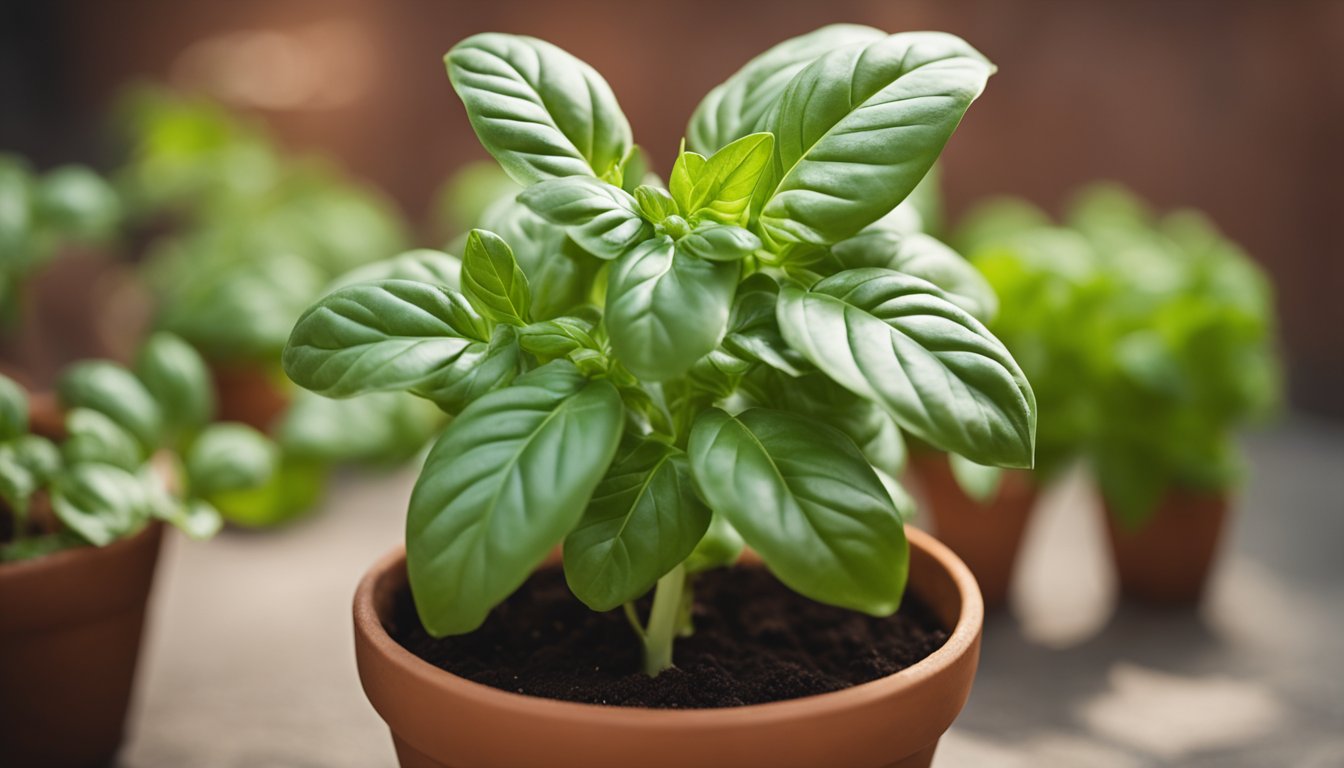If you’ve ever grown basil, you know it’s a culinary superstar that can elevate any dish. But did you know that proper pruning can take your basil plant from good to extraordinary? I’ve discovered that a little snipping here and there not only boosts growth but also enhances flavor.
Understanding Basil Pruning
Pruning basil is crucial for maintaining healthy plants. It encourages bushier growth and enhances the herb’s flavor.
Importance of Pruning Basil
Pruning basil helps control its size. Without trimming, plants may grow leggy and sparse. It also prevents flowering too early. Once basil flowers, its leaves can lose flavor. I prefer vibrant, lush basil, so regular pruning has become my gardening ritual.
Best Time to Prune Basil

Pruning basil at the right time helps keep it healthy and flavorful. Regular trimming encourages lush growth and flavorful leaves.
Seasonal Considerations
Spring represents the best time to start pruning basil. As temperatures warm up, plants become more active. I often begin my pruning routine around mid-spring when the danger of frost passes. This timing gives my basil the best chance to thrive. Late summer also offers an opportunity for a trim. I focus on removing any leggy stems to promote bushier growth before the first frost.
Signs Your Basil Needs Pruning
Look for certain signs that indicate your basil needs a trim. If growth appears tall and spindly, it’s time to prune. I also check for yellowing leaves. This change often means the plant is stressed. Another signal is when flowers start to form. Once basil flowers, its flavor weakens. Snipping off the flowers preserves the taste and encourages more leaf growth. Finally, if the leaves look crowded, it’s a good idea to thin them out. Giving my plants space helps them flourish.
Step-by-Step Pruning Guide
Pruning basil boosts growth and enhances flavor. Follow these steps for successful pruning.
Tools You’ll Need
- Sharp scissors: Clean cuts prevent damage. Always use sharp tools.
- Garden shears: Ideal for larger plants. They make quick work of thick stems.
- Gloves: Protect your hands from sap. Basil can stick around.
- Container: Use for collecting cuttings. Keep your space tidy.
How to Properly Prune Basil Stems
Start with clean tools. This reduces the risk of disease. Identify healthy stems. Look for those about six inches long.
Cut the stem above a leaf node. Leave at least two sets of leaves for regrowth. Avoid cutting too much from one area. This helps maintain balance.
Remove any flowers. They divert energy away from leaf production. Trim back leggy growth. Encourage bushier plants with dense leaves.
Prune regularly. I usually do this every few weeks. Enjoy the process, and don’t take it too seriously. Basil grows back quickly! Your culinary creations will appreciate it.
Tips for Pruning Basil Effectively

Pruning basil effectively encourages plant health and flavor. A few key practices help me get the best from my basil plants.
Common Mistakes to Avoid
Cutting too much at once can hurt the plant. I try to remove only a third of the leaves during each session. Ignoring the leaf nodes is another error I’ve made. The nodes are critical for regrowth; always cut just above them. Forgetting to disinfect tools can introduce pests. I always clean my scissors before starting. Lastly, don’t be tempted to leave the flowers. Removing flowers prevents the plant from going to seed, which can reduce the quality of the leaves.
Frequency of Pruning
Pruning every three to four weeks keeps my basil thriving. I usually start in mid-spring. Consistent pruning helps control growth and keeps the plants bushy. It’s like a little haircut for my basil. In late summer, I give them an extra trim to prepare for the winter months. With regular care, I enjoy a robust harvest all season long.
Before You Go – How to Prune Basil
Pruning basil is more than just a gardening chore; it’s a rewarding practice that enhances the plant’s growth and flavor. By regularly trimming your basil, you’ll enjoy a fuller and healthier harvest. The simple act of pruning not only keeps the plant vibrant but also elevates your culinary creations.
Remember to stay attentive to your basil’s needs and prune whenever you notice signs of legginess or flowering. With the right tools and techniques, you can make this process both effective and enjoyable. Embrace the routine and watch your basil thrive throughout the season. Happy gardening! Don’t forget to add The Herb Prof to your favorites so you don’t miss out on future articles.
References – How to Prune Basil?
Little Herb Encyclopedia, by Jack Ritchason; N.D., Woodland Publishing Incorporated, 1995
The Ultimate Healing System, Course Manual, Copyright 1985, Don Lepore
Planetary Herbology, Michael Tierra, C.A., N.D., Lotus Press, 1988
Handbook of Medicinal Herbs, by James A. Duke, Pub. CRP Second Edition 2007
The Complete Medicinal Herbal, by Penelope Ody, Published by Dorling Kindersley
Check the Following Articles
Strategies for Effective Protection of Crops
The Beauty and Benefits of Milkweed Pods
How to Harvest Cilantro: Tips for Fresh and Flavorful Leaves
Bridal Veil Plant Care: Tips for a Lush Indoor Garden
Frequently Asked Questions – How to Prune Basil?
What are the benefits of pruning basil plants?
Pruning basil plants improves their growth, encourages bushier foliage, and enhances the flavor of the leaves. By trimming regularly, you can prevent early flowering, which can downgrade the taste, leading to a more vibrant yield perfect for culinary use.
When is the best time to prune basil?
The ideal time to prune basil is in mid-spring after the risk of frost has passed. A late summer trim is also beneficial to remove leggy stems and prepare the plant for cooler temperatures. Regular maintenance ensures healthy growth.
How can I tell if my basil needs pruning?
Signs that your basil needs pruning include tall, spindly growth, yellowing leaves, the formation of flowers, and overcrowded leaves. Pruning helps manage these issues and maintains flavor and health in your basil plants.
What tools do I need for pruning basil?
You will need sharp scissors or garden shears, gloves, and a container to collect cuttings. Make sure to have clean, disinfected tools to avoid introducing diseases to your plants.
How often should I prune my basil?
Regular pruning should be done every three to four weeks. This consistent schedule helps keep basil plants thriving, encourages dense foliage, and promotes a robust harvest throughout the growing season.
What are some common mistakes to avoid while pruning basil?
Avoid cutting too much at once, neglecting leaf nodes, and using non-disinfected tools. Removing only a third of the leaves during each session will ensure healthy regrowth and prevent undue stress on the plant.

